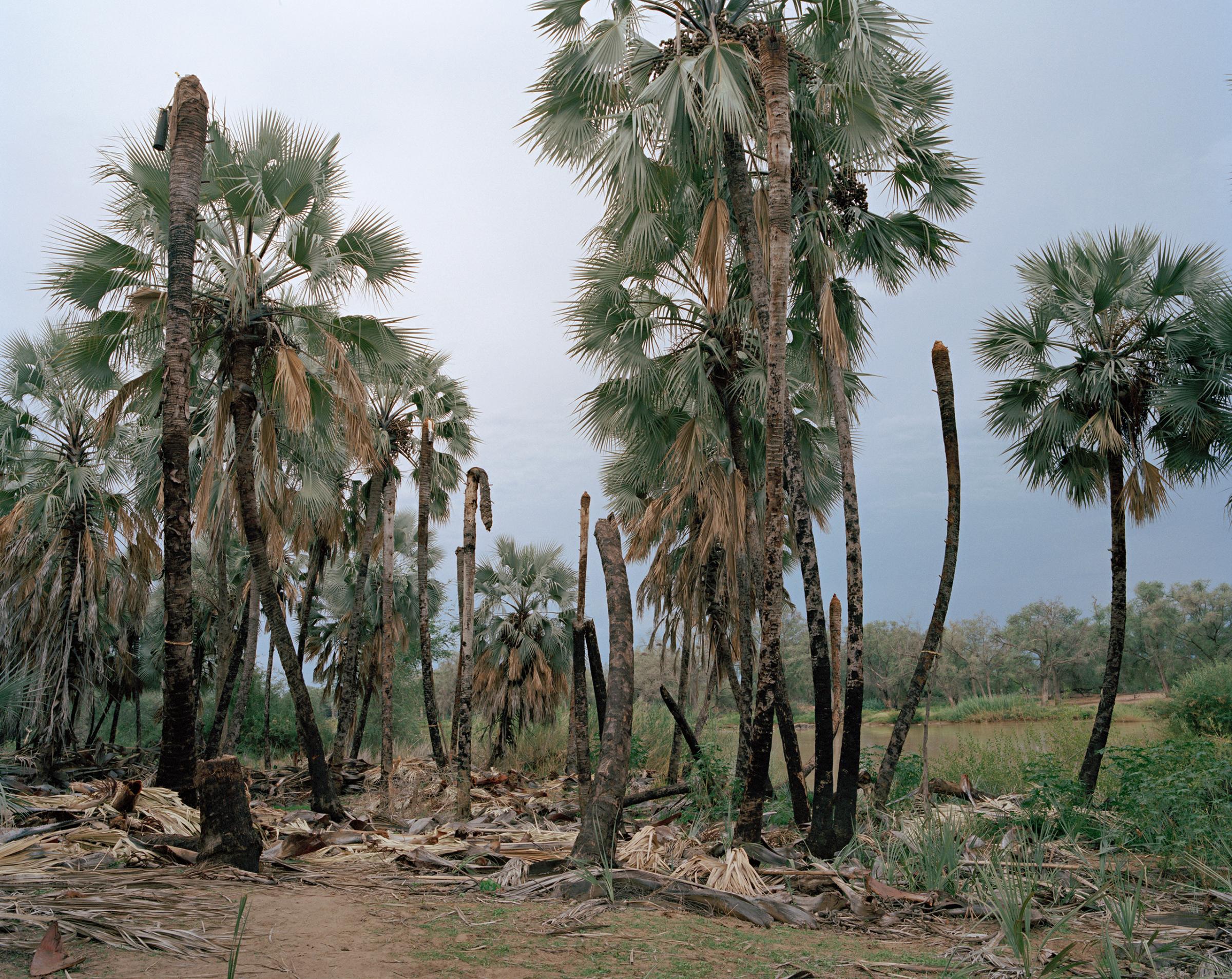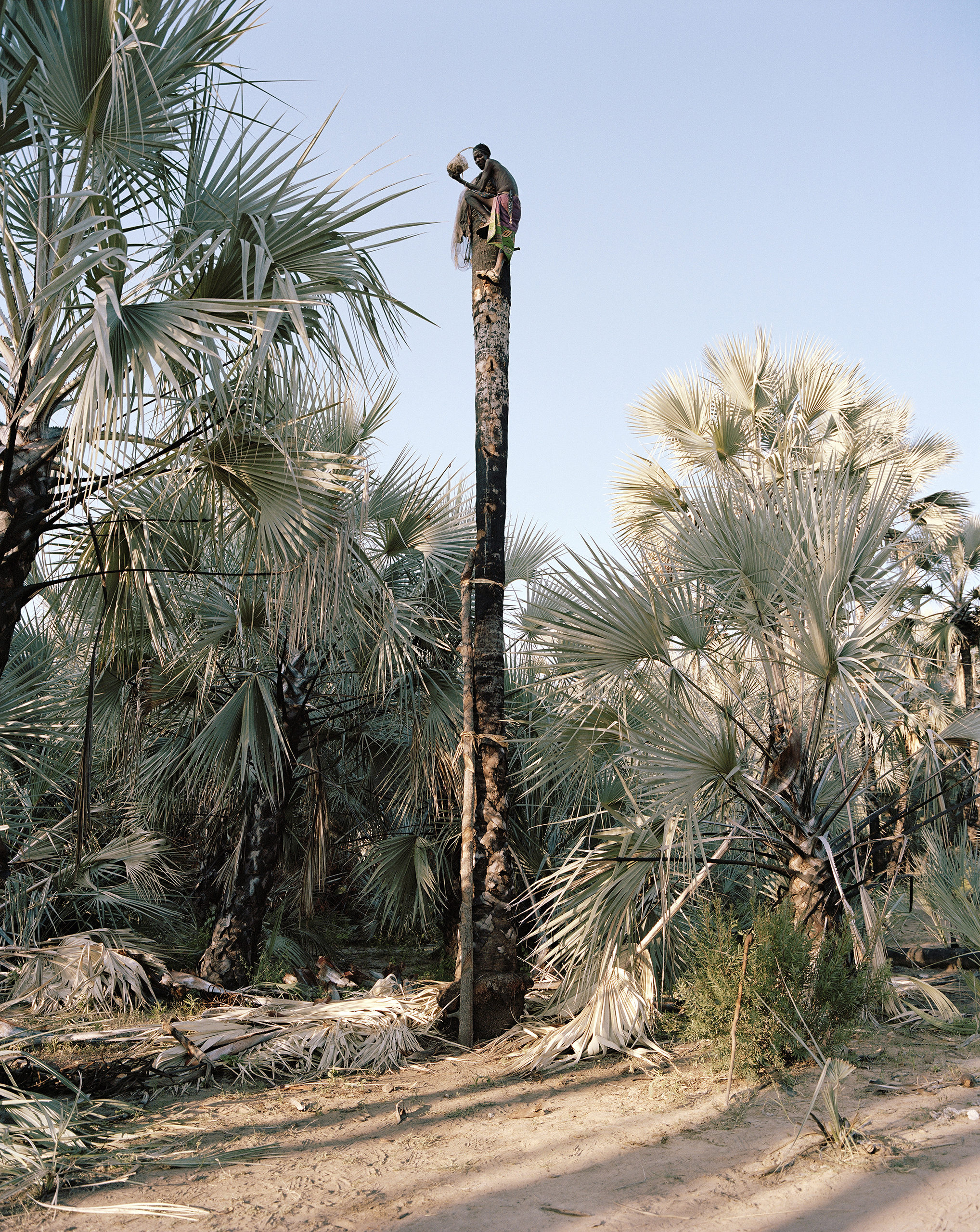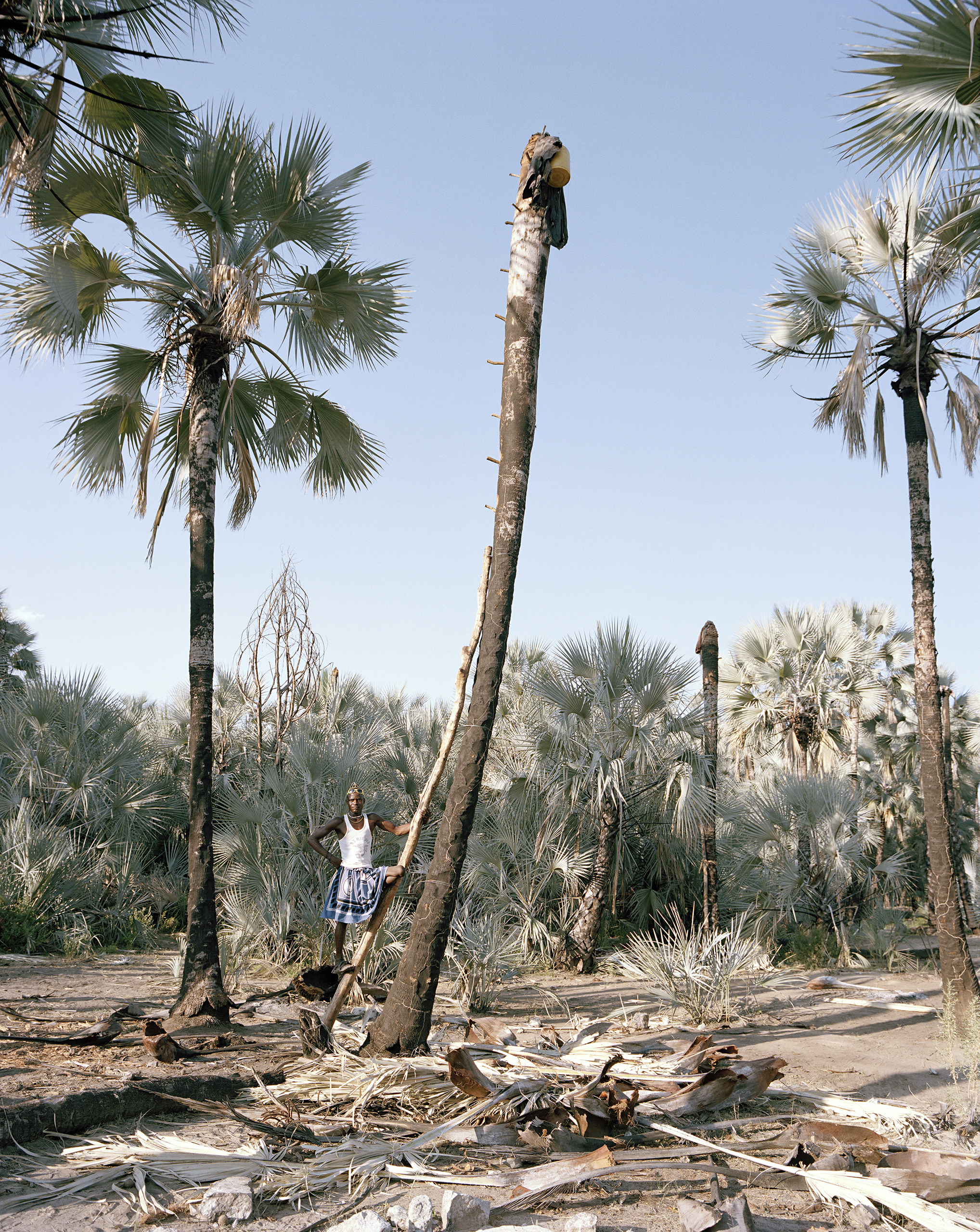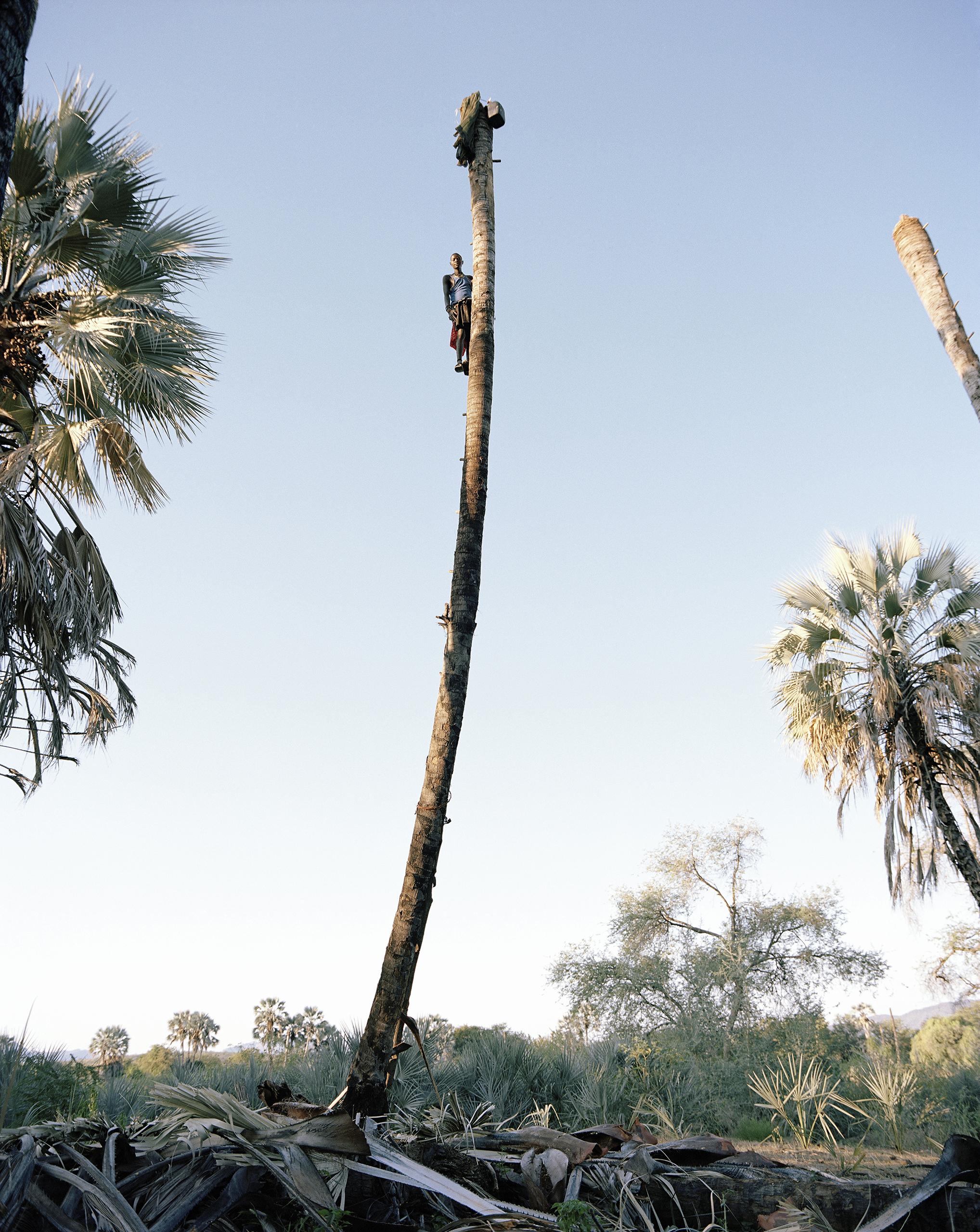
Namibia’s dynamic culture may be modernizing but the country still has one foot in its ancient past. Through its strong sense of filial piety and respect for tradition, practices such as palm wine collecting have endured. Though the process has been illegal for years, the country’s indigenous Himba people flagrantly ignore the law, in favor of holding on to a cherished culture. For photographer Kyle Weeks, it’s this paradox that makes the country such a visually arresting place.
Weeks began documenting the Himba tribe, who reside in the northwestern Kunene region, four years ago. But for him, these portraits are as much about giving subjects ownership of their narrative, as they are about custom. The affecting images are a study of the complex relationship between the men and their surroundings. “The practice of collecting the wine from these palms directly contributes to the men’s personal and cultural identity,” Weeks tells TIME. “They were very excited to be represented performing this ancient cultural practice.”
Palm wine is gathered using an ancient technique, first used by the Himba people in the mid-16th century when their ancestors migrated from northern Angola to northern Namibia. To obtain the sap, the men first pierce a well-aged male palm trunk with stakes, then use the stakes to scale the tree, which can tower up to 100 feet. Once at the top, they hack the crown away from the stem. This sacrificial beheading causes the tree to die and is where the white sap, which has risen up the hollowed trunk, is collected. The naturally occurring yeasts cause the sap to turn alcoholic.
Weeks first witnessed the practice during a return trip to the region, following a two-year collaborative project with the Himba men. “At the time the area was suffering a major drought and many of the Himba had moved to the rivers’ edge for water and the nourishing qualities of ‘Otusu’ [palm wine],” Weeks explains. “On travelling downstream I found numerous palms being tapped.” This prompted him to begin a series of environmental portraits documenting the custom.
Weeks’ attraction to portraiture stems from the complex history of photography in Africa. Once used as a means of oppression during colonialism, it now functions as a vehicle for empowerment and self-expression. This re-constructing and reclaiming of identity and narrative is what prompted him to document what he calls the “representational politics of photographing African people and cultural ‘difference’”. Namibian born, with a South African father and American mother, Weeks later came to question his position as an African photographer of Western descent. But through his portraits, he has challenged the traditional power dynamic of subject and photographer. “I’ve always placed importance on allowing the subjects within my photographs to take control of the resulting images,” he says. With his palm wine series, the men were shown their image on digital camera, before Weeks took the final portrait on film.
The Himba youth in particular relish shaping their own identity in the context of a modern age. Weeks describes how one young man, Wakarerera Tjondu, proudly posed for him in his Puma jacket but was also the first person he saw tapping a Makalani Palm. The Himba’s traditional lifestyle, which has continued to flourish in the secluded Kunene region, is increasingly susceptible to the influx of tourism and mass media and the elders fear their old way of life may be slipping away. But while young Himba men’s aspirations may be westward looking, they still take great pride in traditional roles, like collecting palm wine. “These men understand something about the constructed and fluid nature of personal and cultural identity,” says Weeks.
Kyle Weeks is a Namibian photographer currently based in Cape Town, South Africa. Follow him on Instagram.
Danielle Amy Staif, who edited this photo essay, is a photo assistant at TIME. Follow her on Instagram.
Alexandra Genova is a writer and contributor for TIME LightBox. Follow her on Twitter and Instagram
Follow TIME LightBox on Facebook, Twitter and Instagram










More Must-Reads From TIME
- Dua Lipa Manifested All of This
- Exclusive: Google Workers Revolt Over $1.2 Billion Contract With Israel
- Stop Looking for Your Forever Home
- The Sympathizer Counters 50 Years of Hollywood Vietnam War Narratives
- The Bliss of Seeing the Eclipse From Cleveland
- Hormonal Birth Control Doesn’t Deserve Its Bad Reputation
- The Best TV Shows to Watch on Peacock
- Want Weekly Recs on What to Watch, Read, and More? Sign Up for Worth Your Time
Contact us at letters@time.com